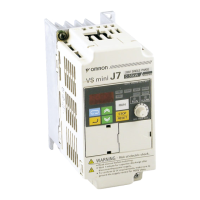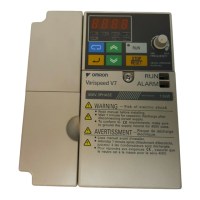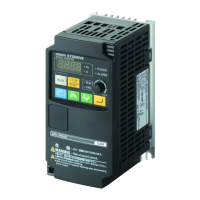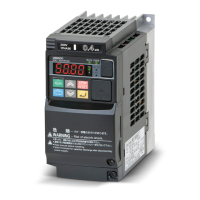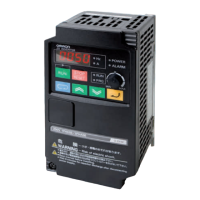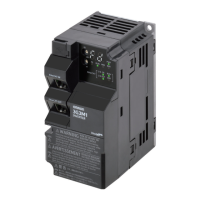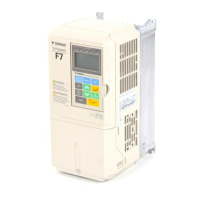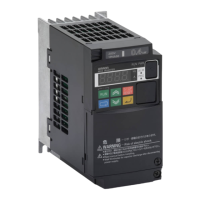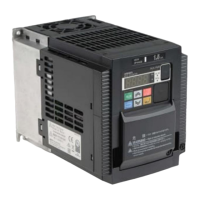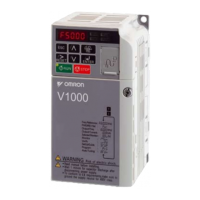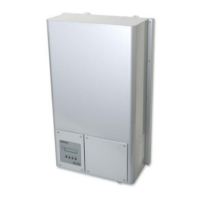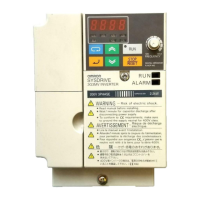3.17 Motor Application Precautions
100 SIEPCYEUOQ2V01A Q2V Technical Manual
■ Audible Noise
The audible noise of the motor changes when the carrier frequency setting changes. When you use a high carrier
frequency, audible noise from the motor is equivalent to the motor noise generated when you operate from line
power. If you operate at speeds that are more than the rated rotation speed, the unwanted motor noise increases.
◆ Precautions for PM Motors
• Contact the manufacturer or your nearest sales representative to use a PM motor that is not from the drive
manufacturer.
• You cannot operate a PM motor from a commercial power supply. If you must operate from a commercial
power supply, use an induction motor.
• You cannot operate more than one PM motor from one drive. Use an induction motor and a variable-speed
control drive.
• In OLV/PM, the motor can operate in the reverse direction for 1/2 turn (electrical angle) at start up.
• The quantity of generated starting torque changes when the control method and motor type change. Verify the
starting torque, permitted load characteristics, impact load tolerance, and speed control range before you set up
the motor with the drive. Contact the manufacturer or your nearest sales representative to use a motor that does
not meet these specifications.
• In OLV/PM control, braking torque is always 125% or less when operating between 20% and 100% speed. A
braking resistor unit will not change the value. Braking torque is 50% or less when operating at 20% speed or
less.
• When you use a holding brake in OLV/PM control, release the brake before you start the motor. Failure to set
the correct timing can cause a decrease in speed. Do not use these configurations in applications with heavy
loads, for example conveyors or elevators.
• To restart a coasting motor that is rotating faster than 120 Hz, first use the Short Circuit Braking function to stop
the motor. A special braking resistor unit is necessary for Short Circuit Braking. Contact the manufacturer or
your nearest sales representative for more information.
To restart a coasting motor that is rotating slower than 120 Hz, use the Speed Search function.
If the motor cable is long, use Short Circuit Braking to stop the motor.
Note:
The Short Circuit Braking function uses the drive to forcefully cause a short across the motor wires to stop the motor before it has time
to coast to a stop.
• You can also use EZOLV to operate synchronous reluctance motors (SynRM). Contact the manufacturer or your
nearest sales representative for more information.
• If oC [Overcurrent], STPo [Motor Step-Out Detected], or LSo [Low Speed Motor Step-Out] occur during
restart, try Speed Search again and use the Short Circuit Braking function when you start to adjust the motor.
◆ Precautions for Specialized Motors
■ Pole Change Motors
The rated current of pole change motors is different than standard motors. Check the maximum current of the
motor before you select a drive. Always stop the motor before you switch between the number of motor poles. If
you change the number of poles while the motor is rotating, the overvoltage from regeneration or the overcurrent
protection circuitry will make the motor coast to stop.
■ Submersible Motors
The rated current of a submersible motor is more than the rated current of a standard motor. Use a sufficiently
large motor cable that will not let voltage drop decrease the maximum torque level.
■ Explosion-Proof Motors
You must test the motor and the drive together for explosion-proof certification. You must also test existing
installations of explosion-proof motors. The drive is not designed for explosion-proof areas. Install the drive in a
safe location.
The encoder used with pressure-resistant explosion-proof motors is intrinsically safe. When wiring between the
drive and encoder, always connect through a specialized pulse coupler.
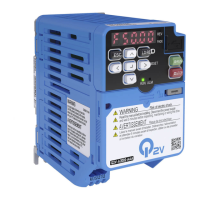
